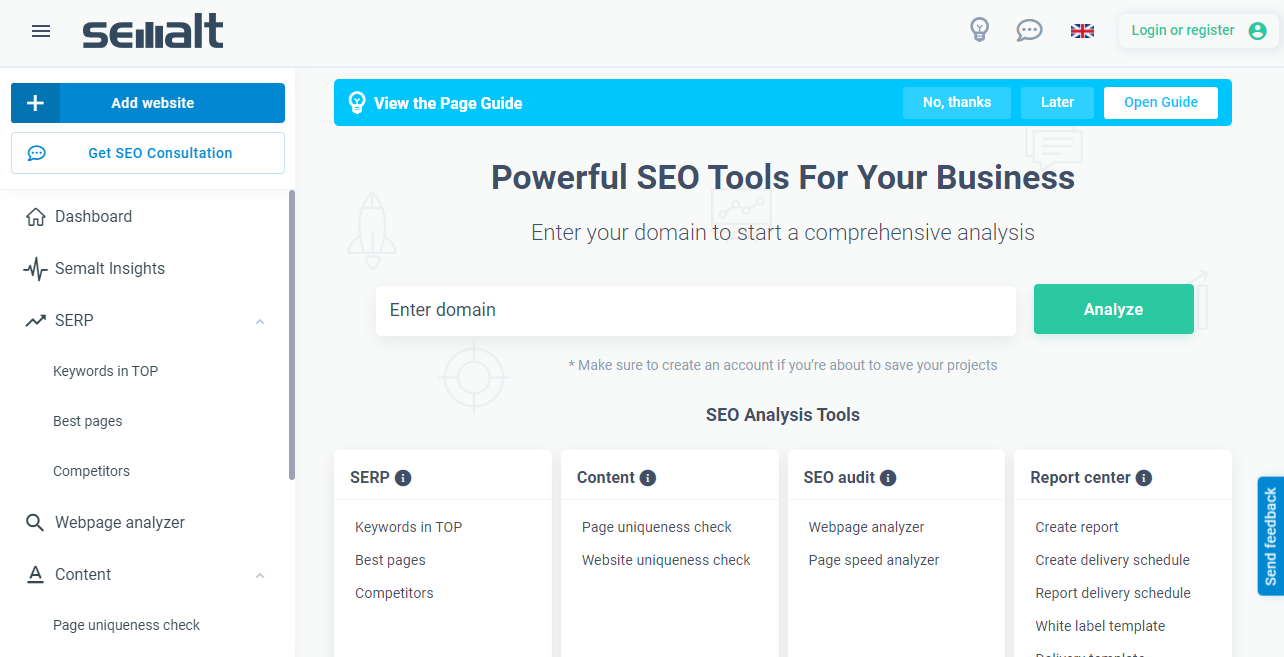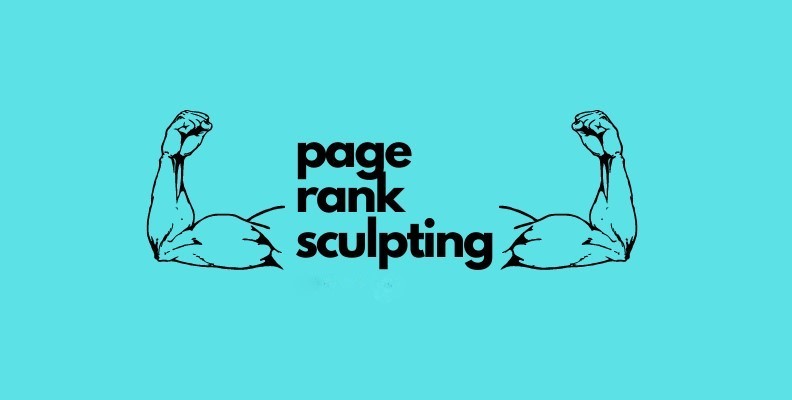Semalt Explains What Page Rank Sculpting Is
All online business promoters dream of having an authority flow within their website. To achieve this, there are several methods, one of which is Page Rank sculpting. Indeed, page rank sculpting is conscious and thoughtful control of the authority flow within the website. Through PR sculpting, you will increase the authority of the positioned pages and reach higher positions.
So, what is Page Rank sculpting and how does it work to benefit your site? This is the main objective of our guide today.
However, before we get started, let's talk a little about Page Rank!
What is PageRank?
PageRank is an algorithm that was once the foundation of Google search. It is a concept developed during the academic days of Larry Page and Sergey Brin - founders of Google Inc. PageRank is a mechanism for assigning a numerical rating to the value of a website based on links from other sites pointing to it.
The idea refers to the practice used in the world of science - the more an article of a given scientist is cited in the works of other scientists, the more esteem it is. Brin and Page assumed that adding a link to another website on their website was a token of appreciation and, at the same time, a "vote" in a virtual vote. The more such "votes" a given page had, the higher it ranked (of course, this is a kind of simplification, but roughly it looked like that).
Over time, PageRank was no longer a sufficient criterion. Eventually, it became part of a more complex core algorithm, which takes into account several factors in the process of organizing search results.
Why SEO PageRank Specialists?

Over the years, SEO specialists have focused on one thing in the positioning process - acquiring links. Today it is an important factor, but one of many. In the past, it was not necessary to ensure that the website was friendly to mobile devices. The fact that it had extensive content, an appropriate structure, and internal linking was enough to get links from other sites.
The link structure should be viewed as an extensive network of links between different domains and URLs. So it is not only the number of links that matters but also where the links are obtained from. Getting a link from a page linked to 1000 from other pages is much more valuable than getting a lot of links from pages that are not indicated anywhere else. The point is that PageRank, which measures the "power" of acquired links, flows between sites. A link from a well-linked, popular website gives you a more powerful boost of this "power". Therefore, in the process of acquiring links (as well as selling them), knowledge about the strength of individual subpages is very important.
Now that you know a little about PageRank, let's talk about how to use PageRank sculpting!
Who uses PR sculpting?
In practice, this is a tactic very rarely used by SEO specialists (not to mention developers responsible for setting up online stores). No wonder, because most SEO activities on the market come down to title optimization, writing "valuable content" (haha) for x thousand characters, and starting schematic link building. And, of course, there are always some false actions with alt or meta description optimization.
In practice, any optimization of the website for SEO should also include the reorganization of the structure and technicalities to better control the flow of authority. A well-conducted SEO audit with a proper tool such as the Dedicated SEO Dashboard should also indicate opportunities in this regard. This will allow you to focus not only on identifying obvious technical errors.

After all, the positioning of websites is not only the expansion of factors that improve the position but also the optimal use of the previously accumulated potential of the website.
PR sculpting and information architecture
To optimize your website for SEO, you should first of all take care of:
- correct technicalities enabling efficient crawling, rendering, and indexing;
- information architecture conducive to the appropriate distribution of authority and phrase targeting.
The choice of title and H1 is a derivative of previous actions. So is content planning. Link building, although an external action, should also result from strategic assumptions made at the beginning of architecture planning.
Authority? Page Rank? So what?
Why is it so important? Well, Google displays links in SERPs based on matching (to the phrase + personalization) and the authority of the website. For popular commercial search queries, there are dozens of responses (landing pages) that are just as well suited. They have very similar titles and site content. However, they differ in authority and trust on the part of Google, which ultimately determines high positions.
Authority is a general term, a concept. We do not know the details of the Google algorithm, but with a high degree of certainty, we can assume that there is something like topical authority (a bonus for websites that specialize in given issues and describe them extensively) and link authority. Link authority overflows between pages through links (between domains through the so-called backlinks and within websites through the so-called internal linking).
Internal linking scale
When planning internal linking, think about which pages you want to support the most. Do some of them have priority and should be linked more often? Or maybe you want to link everything to anything where there is some natural context? It all depends on the structure of the site, how it is monetized, and its goals and possibilities. For large websites, automating internal linking is a real challenge. This topic has been hard fought by many SEO experts, resulting in an NLP-based internal linking system. If you are interested in semantics, authority-oriented thematic links and better communication of your content to Google, check out our internal linking solution among our Blog articles.
How does PR sculpting work?
Each page has a limited amount of power to transfer to the linked pages. Imagine a site where each page links to all other pages. In such a situation, the authority is distributed evenly. This is usually not an optimal situation, because why should the contact page or the privacy policy receive the same amount of power as the page of a popular category? Or why should a product page - that is one of many similar variants and is not searched separately for unique keywords - be as powerful as a category page that targets the most important keyword for this assortment?
When taking actions in the field of Page Rank sculpting, we use the following tools:
- consciously built hierarchy of pages;
- deliberate creation of bottlenecks in the flow of site-wide authority to less important pages at the main menu level;
- use of links invisible to Google.
The latter is especially important as it helps to manage not only the flow of authority but also the crawling budget. Controlling Googlebot with nofollow links is just a very inefficient solution. The same applies to the simultaneous imposition of disallow blocks in robots.txt on individual subpages and noindex directives in meta robots or HTTP headers.
What gives Page Rank Sculpting in an online store?
In the end, the right choice of optimization tools allows you to direct the authority where it needs to be. Thanks to this, you do not feed websites that do not need more power, because they either have no competition (specific products available only in one place) or do not take part in obtaining organic traffic from Google at all. Nobody is looking for them, or the parent category collects them.
What gives us the closure of the flow of authority to irrelevant parties? Well, this authority will not evaporate (if we do it wisely) but will dissipate appropriately in the system of connected vessels, which are the subpages of the website connected with internal links. In other words, pages important from the positioning perspective will have more power, and link building will have a greater impact not only on linked pages but also on the pages surrounding them within site.
Nofollow in internal linking
Someone may say that it is enough to use nofollow links within the website to get a similar effect. Unfortunately, this has not been a good idea for a long time.
Let's assume a simple website model, in which we have a page that accumulates authority (e.g. a home page well linked from the outside) and 3 subpages. Each subpage receives a dofollow link from the home page. Statistically, 1/3 of the authority will flow through each link:
What happens when one of the links is changed to a nofollow link? We expect no authority to flow through the nofollow link (rightly), and all the power will be distributed to the other two lines (wrongly). In this scenario, the authority will be calculated as 100% divided by the total number of links (df and nf), and statistically, this amount of authority will be assigned to each df link:
This is, of course, a simplified model, and these numbers should be treated as a guide, because the actual distribution of the allocated power may vary. It is important to understand that the use of dofollow links does not spread the power to other pages, but unfortunately "evaporates" it.
However, if instead of nofollow links, other forms of links were used (which are invisible to Google, incomprehensible, or simply not treated as links by Googlebot in general), it would be possible to distribute 100% of the power to pages that need it. And that is what it is all about.
